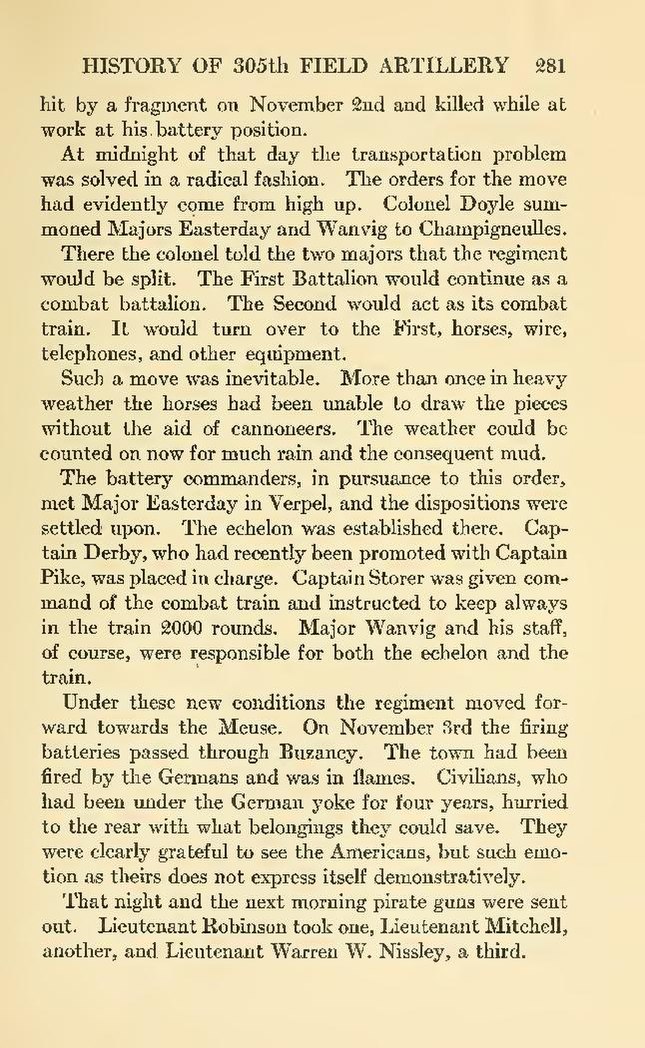hit by a fragment on November 2nd and killed while at
work at his battery position.
At midnight of that day the transportation problem was solved in a radical fashion. The orders for the move had evidently come from high up. Colonel Doyle summoned Majors Easterday and Wanvig to Champigneulles. There the colonel told the two majors that the regiment would be split. The First Battalion would continue as a combat battalion. The Second would act as its combat train. It would turn over to the First, horses, wire, telephones, and other equipment.
Such a move was inevitable. More than once in heavy weather the horses had been unable lo draw the pieces without the aid of cannoneers. The weather could be counted on now for much rain and the consequent mud.
The battery commanders, in pursuance to this order, met Major Easterday in Verpel, and the dispositions were settled upon. The echelon was established there. Captain Derby, who had recently been promoted with Captain Pike, was placed in charge. Captain Storer was given command of the combat train and instructed to keep always in the train 2000 rounds. Major Wanvig and his staff, of course, were responsible for both the echelon and the train.
Under these new conditions the regiment moved forward towards the Meuse. On November 3rd the firing batteries passed through Buzancy. The town had been fired by the Germans and was in flames. Civilians, who had been under the German yoke for four years, hurried to the rear with what belongings they could save. They were clearly grateful to see the Americans, but such emotion as theirs does not express itself demonstratively.
That night and the next morning pirate guns were sent out. Lieutenant Robinson took one, Lieutenant Mitchell, another, and Lieutenant Warren W. Nissley, a third.
